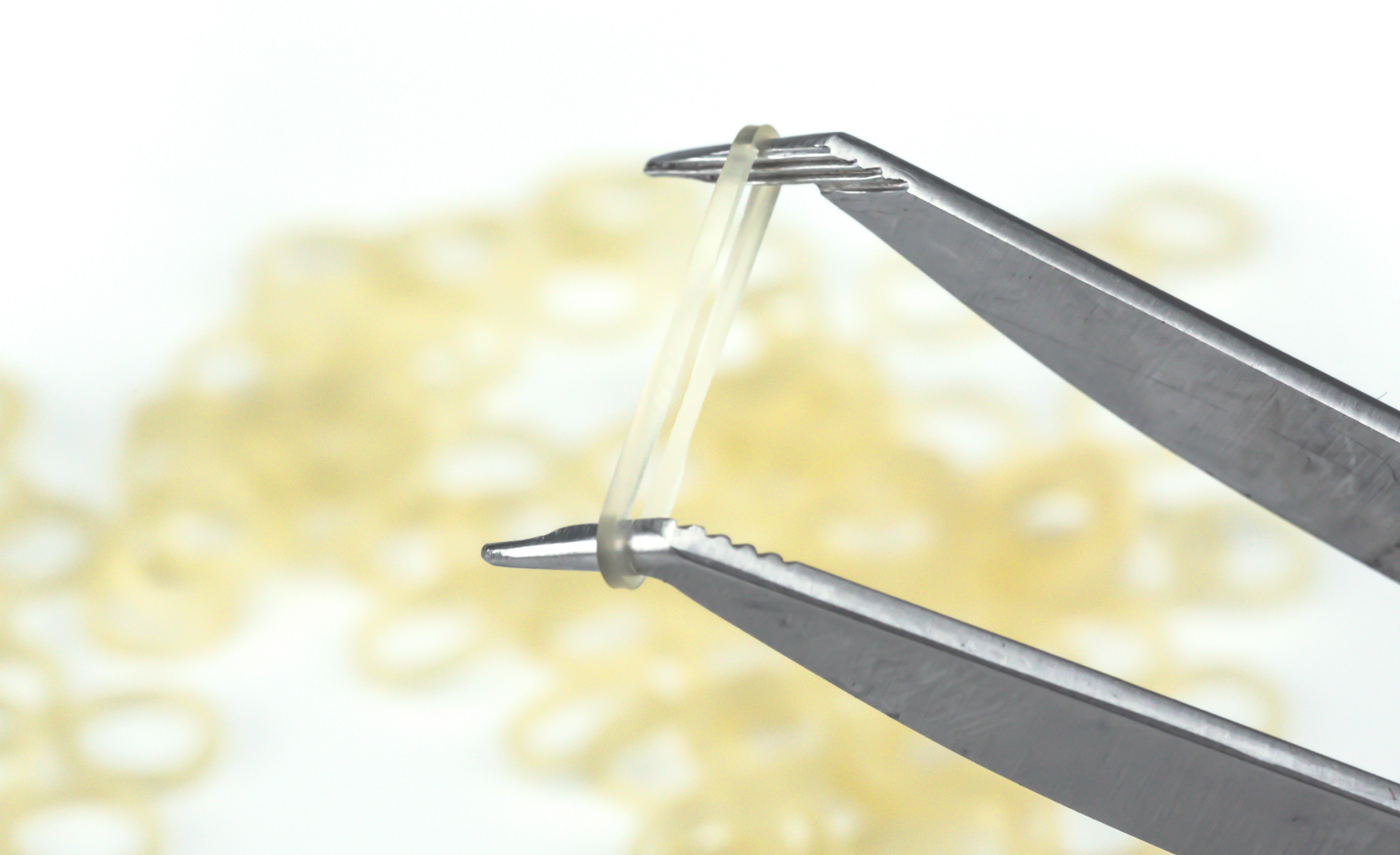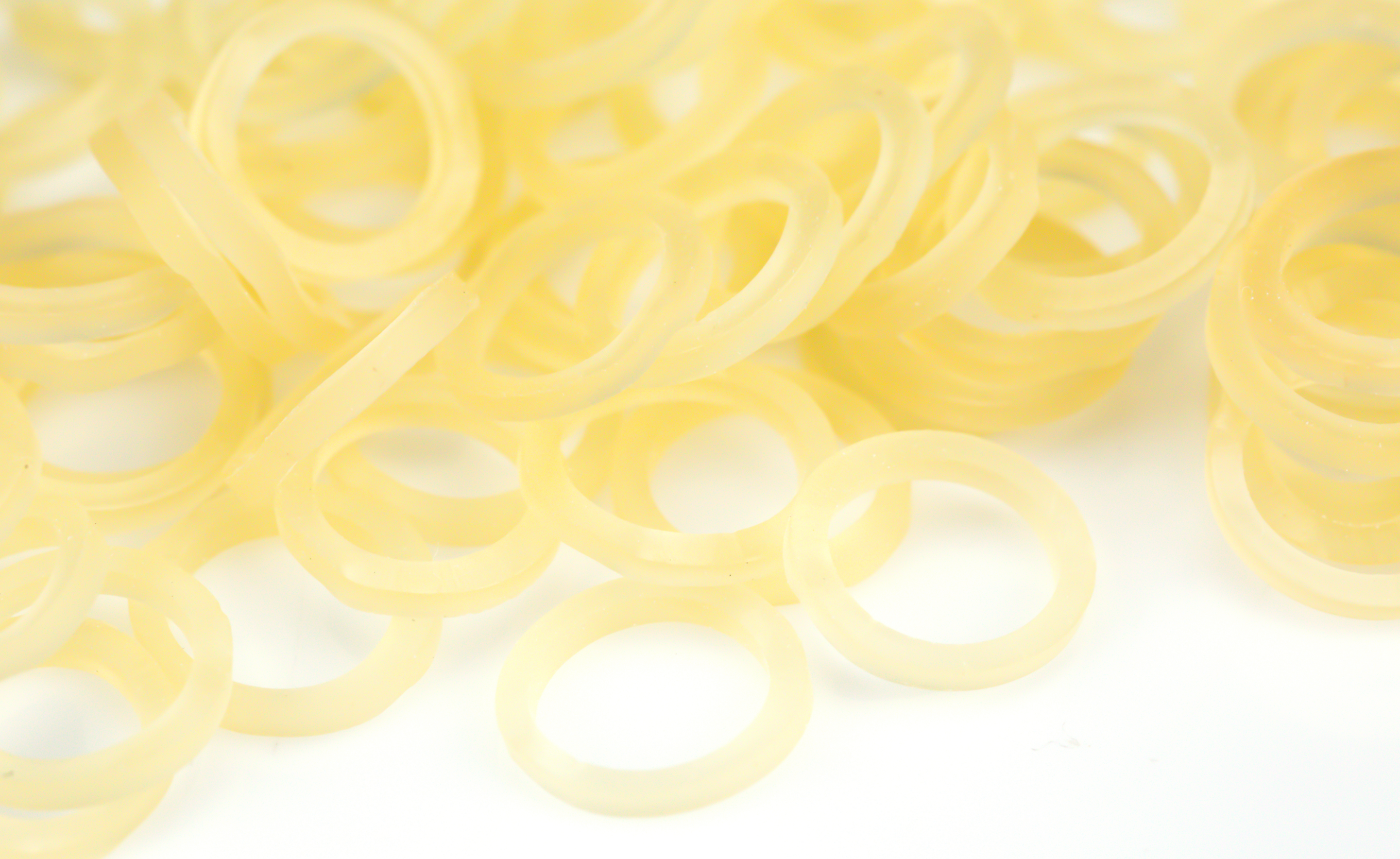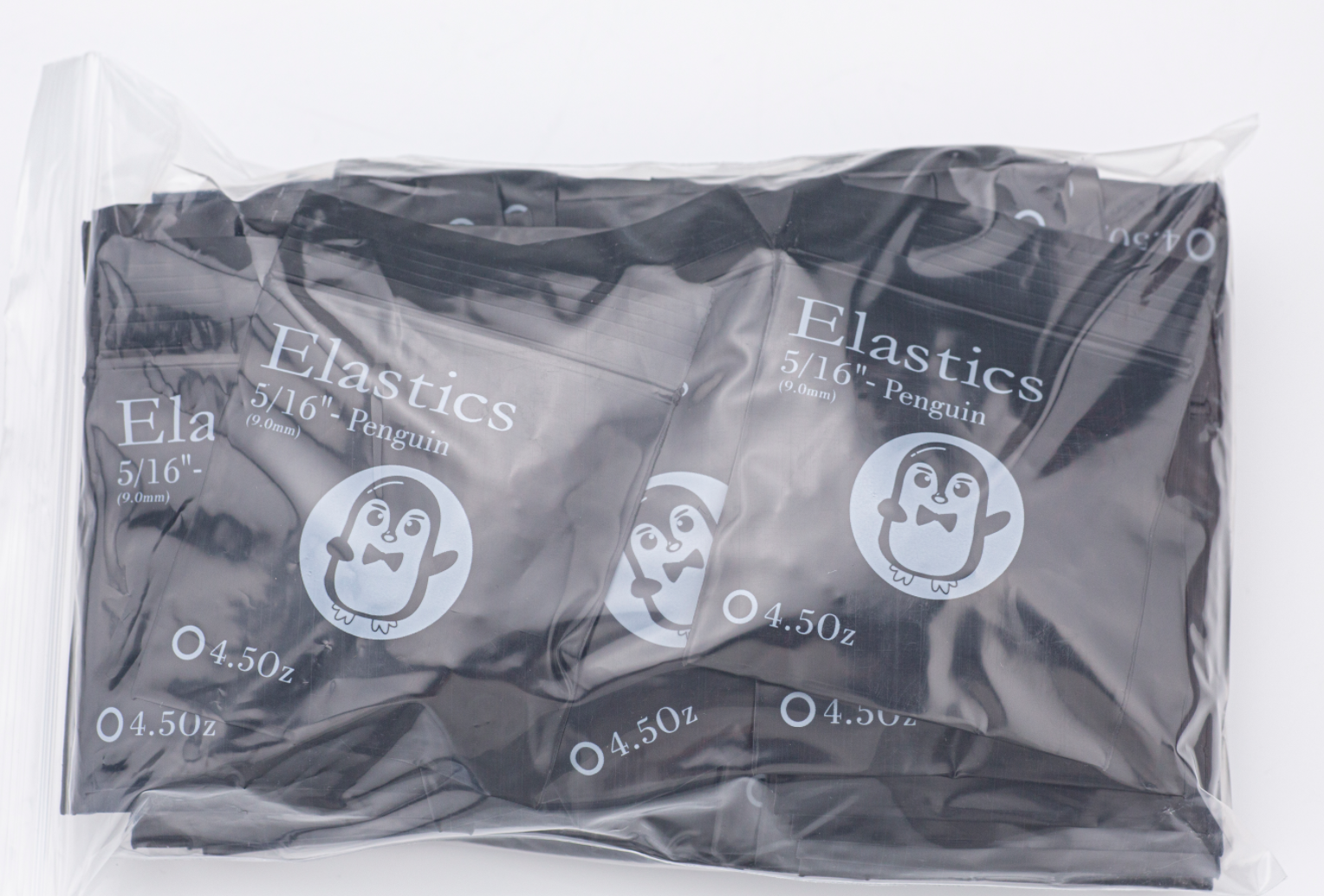You may notice animal names on your orthodontic rubber band packaging. Each animal stands for a specific size and strength. This system helps you remember which rubber band to use. When you match the animal to your treatment plan, you make sure your teeth move the right way.
Tip: Always check the animal name before using a new rubber band to avoid mistakes.
Key Takeaways
- Orthodontic rubber bands come in different sizes and strengths, each marked by an animal name to help you remember which to use.
- Using the right rubber band size and strength, as your orthodontist directs, helps your teeth move safely and speeds up your treatment.
- Always check the animal name and size on your rubber band package before using it to avoid mistakes and discomfort.
- Change your rubber bands as often as your orthodontist tells you and never switch to a different animal without their approval.
- If you feel unsure or notice pain, ask your orthodontist for help to keep your treatment on track and reach your smile goals faster.
Orthodontic Rubber Band Basics
Purpose in Treatment
You use orthodontic rubber bands to help your braces work better. These small bands connect different parts of your braces. They guide your teeth into the right position. Your orthodontist gives you instructions about how and when to wear them. You might need to wear them all day or only at night. The bands create gentle pressure that moves your teeth. This pressure helps fix problems like overbites, underbites, or gaps between teeth.
Note: Wearing your rubber bands as directed helps you finish treatment faster.
Orthodontic rubber bands come in different sizes and strengths. Your orthodontist chooses the best type for your mouth. You may switch to a new size as your teeth move. The animal names on the packaging make it easy to remember which band to use. You should always check the animal name before putting on a new band.

Role in Tooth Movement
Orthodontic rubber bands play a key role in moving your teeth. They attach to hooks on your braces. When you stretch the band between two points, it pulls your teeth in a certain direction. This force helps align your bite and straighten your smile. You might notice your teeth feel sore at first. This soreness means the bands are working.
Here are some ways rubber bands help with tooth movement:
- Close gaps between teeth
- Correct bite problems
- Move teeth into better positions
Your orthodontist may change the placement of your bands during treatment. You should follow their instructions closely. If you skip wearing your bands, your teeth may not move as planned. Consistent use leads to better results.
Orthodontic Rubber Band Sizes
Common Measurements
You will find that orthodontic rubber bands come in many different sizes. Each size fits a specific purpose in your treatment. The size of a rubber band usually refers to its diameter, measured in fractions of an inch. For example, you might see sizes like 1/8″, 3/16″, 1/4″, or 5/16″. These numbers tell you how wide the band is when it is not stretched.
Here is a simple table to help you understand some common sizes:
| Size (Inches) | Typical Use |
|---|---|
| 1/8″ | Small movements, tight fit |
| 3/16″ | Moderate adjustments |
| 1/4″ | Larger movements |
| 5/16″ | Wide gaps or big shifts |
Tip: Always check the size on your rubber band package before using it. Using the wrong size can slow down your progress.
You may notice that your orthodontist changes your rubber band size as your teeth move. This helps your treatment stay on track.

Importance of Size and Strength
The size and strength of your rubber bands matter a lot. Size controls how far the band stretches between your teeth. Strength, or force, tells you how much pressure the band puts on your teeth. Orthodontic rubber bands come in different strengths, such as light, medium, or heavy. Your orthodontist chooses the right combination for your needs.
If you use a band that is too strong, your teeth may feel sore or move too quickly. If you use a band that is too weak, your teeth may not move enough. The correct size and strength help your teeth move safely and steadily.
Here are some reasons why size and strength are important:
- They help your teeth move in the right direction.
- They prevent damage to your teeth and gums.
- They make your treatment more comfortable.
Note: Never switch sizes or strengths without asking your orthodontist. The right orthodontic rubber band helps you get the best results.
Animal Symbolism in Orthodontic Rubber Band Sizes
Why Animal Names Are Used
You may wonder why animal names appear on your orthodontic rubber band packages. Orthodontists use animal names to make it easier for you to remember which rubber bands to use. Numbers and measurements can feel confusing, especially if you need to switch bands during treatment. Animal names give you a simple way to identify the right size and strength.
When you see a package labeled “Parrot” or “Penguin,” you know exactly which band your orthodontist wants you to use. This system helps you avoid mistakes and keeps your treatment on track. Many patients, especially kids and teens, find animal names more fun and less stressful than numbers.
Tip: If you ever forget which animal you need, check your treatment instructions or ask your orthodontist for help.
Popular Animal Names and Their Meanings
You will find many different animal names used for orthodontic rubber bands. Each animal stands for a specific size and force. Some animal names are very common, while others may be unique to certain brands or offices. Here are some popular examples and what they usually mean:
| Animal Name | Typical Size (Inches) | Typical Force (Ounces) | Common Use |
|---|---|---|---|
| Rabbit | 1/8″ | Light (2.5 oz) | Small movements |
| Fox | 3/16″ | Medium (3.5 oz) | Moderate adjustments |
| Elephant | 1/4″ | Heavy (6 oz) | Large movements |
| Parrot | 5/16″ | Heavy (6 oz) | Wide gaps or big shifts |
| Penguin | 1/4″ | Medium (4.5 oz) | Bite correction |
You may notice that some animals, like “Elephant,” often stand for bigger and stronger bands. Smaller animals, like “Rabbit,” usually mean smaller and lighter bands. This pattern helps you remember which animal matches your treatment needs.
Note: Animal names and their meanings can change between brands. Always check with your orthodontist if you are unsure.
Matching Animals to Size and Strength
You need to match the animal name to the correct size and strength for your treatment. Your orthodontist will tell you which animal to use and how often to change your bands. Using the wrong animal can slow down your progress or cause discomfort.
Here is how you can match animals to size and strength:
- Look at your rubber band package for the animal name.
- Check your treatment plan or ask your orthodontist which animal you should use.
- Make sure the animal matches the size and force your orthodontist recommends.
- Replace your bands as often as your orthodontist tells you.
Alert: Never switch to a different animal without asking your orthodontist. The wrong size or strength can affect your results.
You may need to change animals as your teeth move. This change means your treatment is working. Always follow your orthodontist’s instructions to get the best results from your orthodontic rubber band.
Choosing and Using the Right Orthodontic Rubber Band
Following Professional Instructions
Your orthodontist gives you clear instructions for using rubber bands. You need to follow these directions every day. When you use the right orthodontic rubber band, your teeth move as planned. If you skip wearing your bands or use the wrong type, your treatment may take longer.

Here are steps you can follow:
- Check your treatment plan for the animal name and size.
- Wash your hands before touching your rubber bands.
- Attach the bands to the correct hooks on your braces.
- Replace your bands as often as your orthodontist tells you.
- Ask questions if you feel unsure about your instructions.
Tip: Keep extra rubber bands with you. If one breaks, you can replace it right away.
Your orthodontist may change your band size or animal during treatment. This change means your teeth are moving and your treatment is working. Always use the bands your orthodontist recommends.
Understanding the Animal-Size System
Animal names help you remember which rubber band to use. Each animal stands for a specific size and strength. You do not need to memorize measurements or force levels. You only need to match the animal name to your treatment plan.
Here is a simple table to help you understand the animal-size system:
| Animal Name | Size (Inches) | Strength (Ounces) |
|---|---|---|
| Rabbit | 1/8″ | Light |
| Fox | 3/16″ | Medium |
| Elephant | 1/4″ | Heavy |
You can check your package for the animal name before using a new band. If you see a different animal, ask your orthodontist before using it. This system keeps your treatment simple and easy to follow.
Note: Using the correct orthodontic rubber band helps you reach your treatment goals faster.
Frequently Asked Questions About Orthodontic Rubber Bands
What if my animal changes during treatment?
Your orthodontist may ask you to switch to a new animal during your treatment. This change means your teeth are moving and your treatment is working. You might start with a “Rabbit” band and later use an “Elephant” band. Each animal stands for a different size or strength. Your orthodontist chooses the best band for each stage of your treatment.
Tip: Always check your new package for the animal name before you use a new rubber band.
If you see a new animal name, do not worry. Your orthodontist wants your teeth to move in the right way. Changing animals helps your treatment stay on track. You should follow your orthodontist’s instructions and ask questions if you feel unsure.
Can I choose my own animal?
You cannot pick your own animal for your rubber bands. Your orthodontist decides which animal fits your treatment needs. Each animal matches a specific size and force. If you choose the wrong animal, your teeth may not move as planned.
Here is what you should do:
- Use the animal your orthodontist recommends.
- Ask your orthodontist if you want to know why they chose that animal.
- Never switch animals without permission.
Alert: Using the wrong animal can slow down your progress or cause discomfort.
Your orthodontist knows which band works best for your teeth. Trust their advice to get the best results.
Do animal names mean the same thing everywhere?
Animal names do not always mean the same thing at every orthodontic office. Different brands may use different animals for the same size or strength. For example, a “Fox” band at one office might be a “Penguin” band at another.
| Animal Name | Size (Inches) | Strength (Ounces) | Brand A | Brand B |
|---|---|---|---|---|
| Fox | 3/16″ | Medium | Yes | No |
| Penguin | 1/4″ | Medium | No | Yes |
Note: Always check with your orthodontist if you get rubber bands from a new package or brand.
You should not guess the size or strength based on the animal name alone. Your orthodontist will tell you which animal matches your treatment plan. If you travel or switch orthodontists, bring your rubber band package with you to avoid confusion.
What happens if I use the wrong size?
Using the wrong size orthodontic rubber band can cause problems for your braces treatment. You might think a small change does not matter, but the size and strength of each band play a big role in how your teeth move. When you use a band that is too small or too large, you risk slowing down your progress or causing pain.
Here are some things that can happen if you use the wrong size:
- Your teeth may not move as planned. The wrong size can change the direction or amount of force.
- You might feel extra soreness or discomfort. Bands that are too strong can hurt your teeth and gums.
- Your braces could break or bend. Too much force can damage brackets or wires.
- Treatment time may increase. You could spend more months wearing braces if your teeth do not move correctly.
- You may develop new dental problems. Incorrect pressure can cause your teeth to shift in ways your orthodontist did not intend.
Alert: Always check the animal name and size before you put on a new rubber band. If you feel pain or notice something wrong, contact your orthodontist right away.
Here is a quick table to show what can go wrong:
| Wrong Size Used | Possible Result | What You Should Do |
|---|---|---|
| Too Small | Extra pain, slow movement | Switch to correct size |
| Too Large | Not enough movement, loose fit | Ask your orthodontist |
| Wrong Strength | Damage to teeth or braces | Follow professional advice |
You help your treatment succeed when you use the right size and strength. Your orthodontist knows what works best for your mouth. Trust their instructions and always double-check your rubber bands before using them. If you ever feel unsure, ask questions. Your smile depends on using the correct orthodontic rubber band every time.
Animal names make it easier for you to pick the right orthodontic rubber band. Each animal stands for a specific size and strength, which helps your treatment move forward. You should always check the animal name before using a new band.
- Match the animal to your treatment plan.
- Ask your orthodontist if you feel unsure.
Remember: Using the correct rubber band helps you reach your smile goals faster.
FAQ
How often should you change your rubber bands?
You should change your rubber bands at least once a day. Fresh bands work best because they lose strength over time. Always follow your orthodontist’s advice for the best results.
What should you do if you lose your rubber bands?
Keep extra rubber bands with you. If you lose them, ask your orthodontist for more right away. Do not skip wearing them, as this can slow your progress.
Can you eat with your rubber bands on?
Most orthodontists recommend removing rubber bands before eating. Food can stretch or break them. Always put new bands on after you finish your meal.
Why do your teeth feel sore when you wear rubber bands?
Soreness means your teeth are moving. The pressure from the bands helps shift your teeth into place. The feeling usually goes away after a few days.
What if you forget which animal to use?
Tip: Check your treatment plan or ask your orthodontist. Never guess the animal name. Using the wrong one can affect your treatment.
Post time: Aug-21-2025


